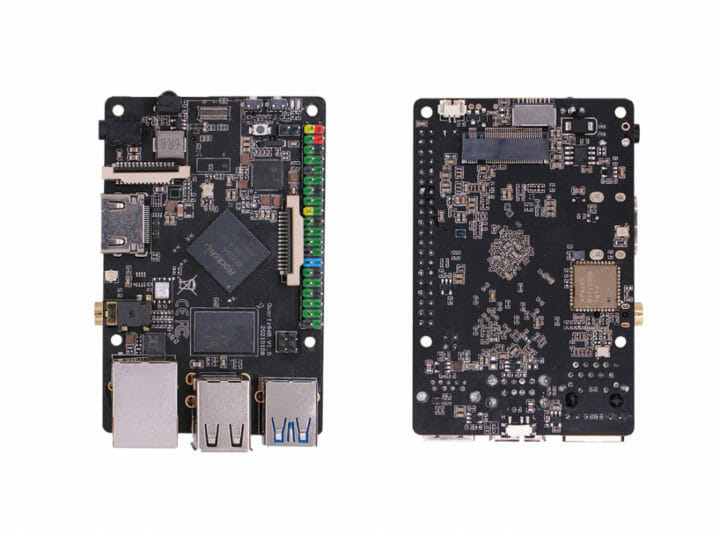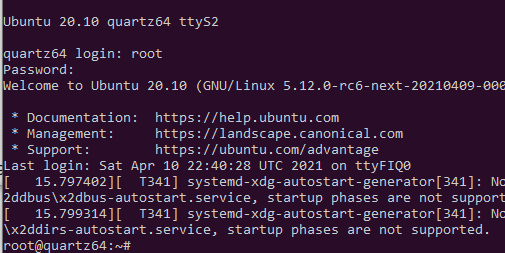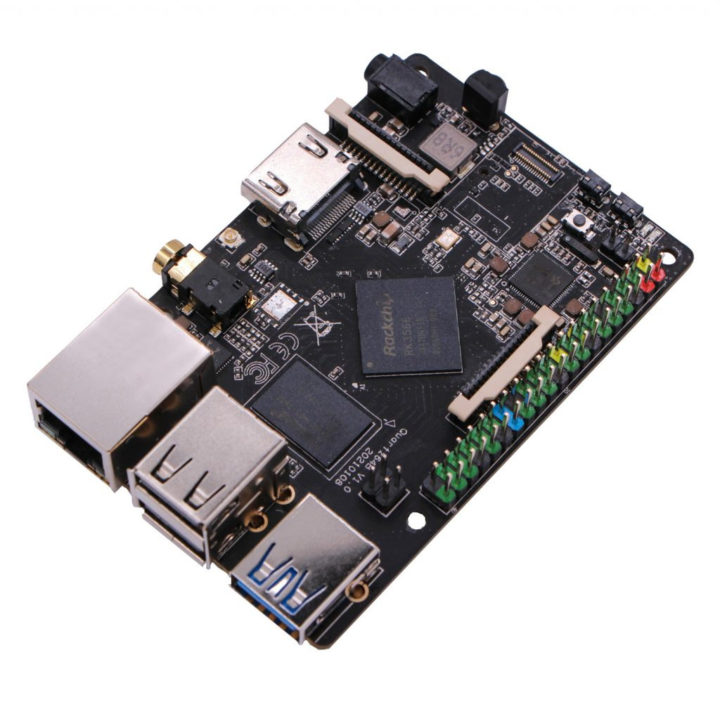Pine64 unveiled the Quartz64 SBC powered by Rockchip RK3566 processor a few months ago. More specifically they provided details about Quartz64 Model A at the time, a featured-rich variant with SATA, PCIe, multiple display outputs, etc…
During the announcement, Pine64 also indicated a Raspberry Pi-sized Quartz Model B was in the works but did not have a prototype to showcase just yet. In the latest Pine64 April update, the community showcased the new board, reported software progress, and information about production delays for Model A.
Quartz64 Model B
- SoC – Rockchip RK3566 quad-core Cortex-A55 processor up to 1.8 GHz with Arm Mali-G52 GPU supporting OpenGL ES 1.1/2.0/3.2, OpenCL 2.0, Vulkan 1.1, 0.8 TOPS NPU for AI acceleration
- System Memory – 2GB to 8GB LPDDR4
- Storage
- 128 Mbit SPI Flash
- optional eMMC module from 16GB up to 128GB capacity
- bootable SDHC/SDXC MicroSD card up to 2TB
- Video Output / Display Interfaces
- HDMI 2.0a up to 4Kp60
- 2-lane MIPI DSI up to 1080p
- Camera I/F – 2-lane MIPI CSI camera Interface up to 5MP
- Audio – 3.5mm audio jack
- Networking
- 10/100/1000Mbps Gigabit Ethernet RJ45 port
- WiFi & Bluetooth via
either a Realtek Bluetooth/WiFi chipset orBouffalo BL602 module(Note: two models of the board will be provided)
- USB – 2x USB 2.0 host ports, 1xUSB 3.0 host port
- Expansion
- 40-pin GPIO header
- M.2 PCIe socket
- Misc – RTC battery connector, IR Tx/Rx
- Power Supply – 5V/3A DC input via 3.5/1.35mm DC barrel jack
- Dimensions – 85 x 56 x 18.8mm

either a Realtek or an BL602 module [Update: BL602 has now been confirmed to be the only option], and an M.2 PCIe socket has been added. The power supply is also different with 5V input on Model B, instead of 12V on Model A. Pine64 had the good idea of using different DC jack sizes so you don’t need to fry your Model B board with a power adapter for model A.
Production delays
We’ve already written about recent chips shortages, lead times of up to 52 weeks, so it should come as no surprise that Quartz64 Model A production has also been affected. Pine64 explains this is due to the lack of stock of the Gigabit Ethernet PHY (namely RTL8211F-CG based on the schematics), with a projected lead time of 12 months, and a price increase of 850%, yes, that’s eight hundred fifty percent.
So the decision has been made to use a separate PHY, meaning Quartz64 Model A production is expected to be pushed back by a month or more, and probably occur at the same time as the B model. But of course, it’s very difficult to make predictions in this environment
Software Progress
While there is bad news on the manufacturing side, software development is progressing nicely. Yesterday, we reported mainline Linux support for Rockchip RK3566/RK3568 processors should happen pretty soon, and Pine64 confirms the board can now boot both mainline and BSP Linux.

With Linux 4.19 from Rockchip BSP, Quartz64 can boot into userspace with Gigabit Ethernet, USB 2.0, and serial working, albeit with some limitations for the latter two, as USB is unstable with long cables and serial requires FIQ-Debugger. Mainlinux Linux is said to have already implemented clocks, GPIO, micro SD, eMMC, USB 2.0, USB 3.0, and the GbE controller.
But there’s still a lot of work as for instance USB 3.0 and PCIe cards are not working, and little things like rebooting the board are not functional at this stage. That means it will take a while for Linux to be used on Quartz64 and other RK356x boards, and at launch, it’s likely only Android 11 will be useable by end-users.

Jean-Luc started CNX Software in 2010 as a part-time endeavor, before quitting his job as a software engineering manager, and starting to write daily news, and reviews full time later in 2011.
Support CNX Software! Donate via cryptocurrencies, become a Patron on Patreon, or purchase goods on Amazon or Aliexpress





